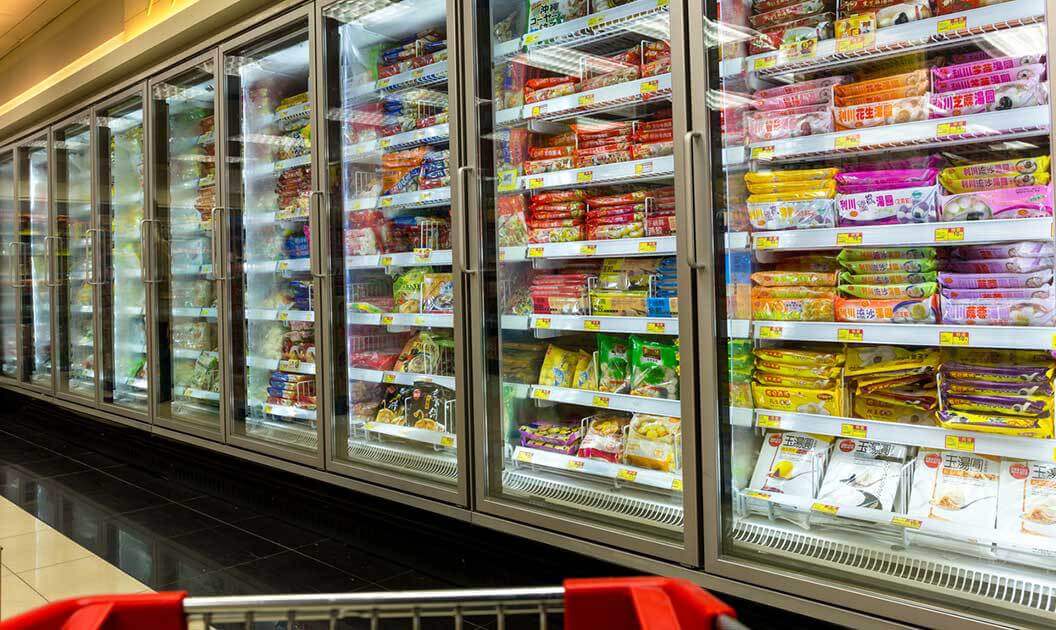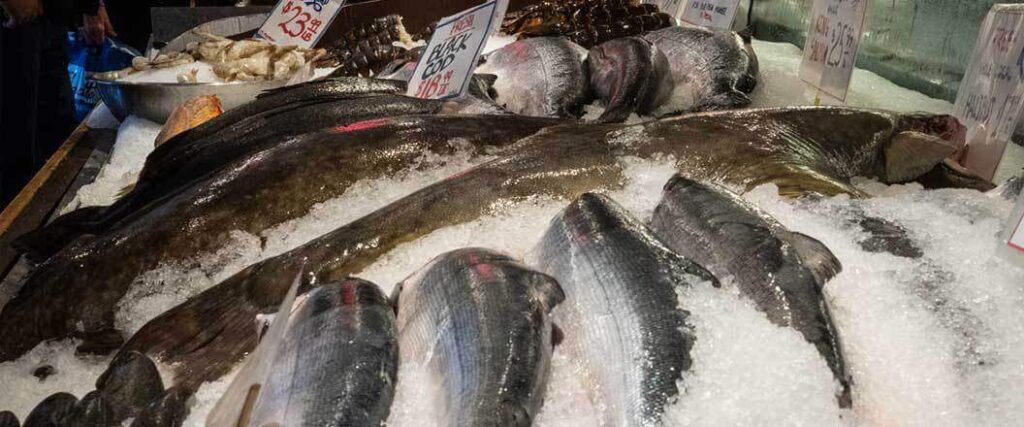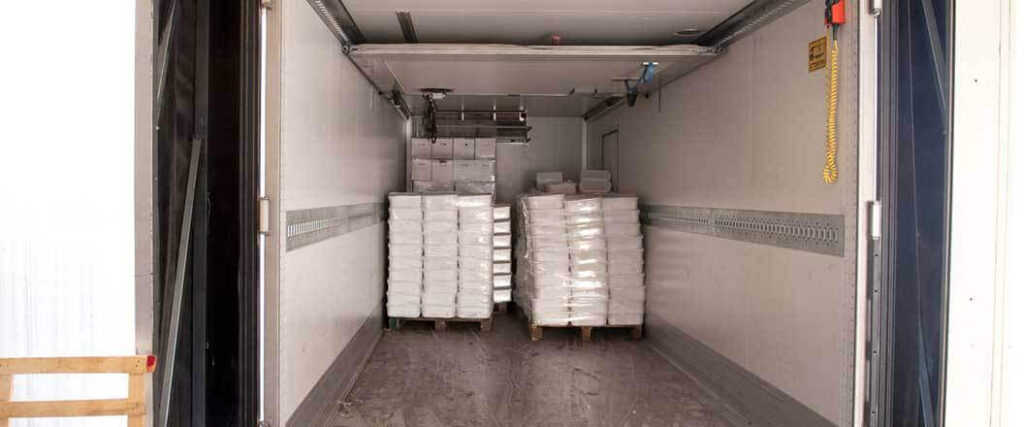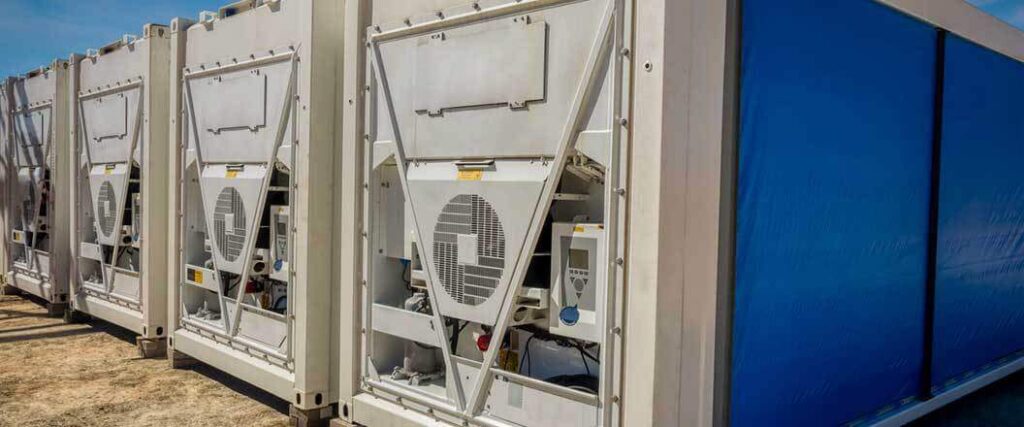
Shipping frozen food internationally in a safe and profitable way can challenge even experienced shippers. Any temperature-controlled product is high risk. Even so, the ability to ship quality food in bulk worldwide has become an expected standard. The path to success is easier with the right kind of partner to help with schedules and budgets.
The U.S. Department of Agriculture (USDA) and the Food and Drug Administration (FDA) regulate the domestic shipping of frozen foods. These agencies maintain agreements with the European Union, Finnish Legislation, and other international bodies to set specific safety standards for the international shipping of frozen foods.
Arrange the shipping of perishable food products worldwide after becoming familiar with international regulations and responsive markets.

One of the biggest drawbacks of entering any cold chain supply market is the sensitive nature of all the products. Fresh and frozen foods have a limited shelf life, which makes the transport method important.
Most nations also have specific regulations that govern food safety. While safety standards are similar in theory, details can change from nation to nation or region to region.
We’ll examine the major regulatory bodies in the following regions:
Advancements in technology have actually made it safer and more profitable to ship frozen food in bulk instead of small parcels. It’s also easier to ship food that is frozen rather than chilled or cool.
As we review best practices and international regulation, we’ll focus on a few key areas.
Arranging international shipping of frozen foods is possible, and it’s become a necessary part of the global food chain. Food safety regulations are for more than shippers. They ensure the safety of everyone depending on your products too.
To ease the pressure, you can hire a freight forwarding service. They can assist with transport arrangements and make sure you have all the required paperwork.

Products with a limited shelf life, from food to flowers, take some of their value from the short time span in which they are available. When flowers don’t make a journey, it’s bad for the seller and the buyer. Here’s the difference – wilted flowers don’t hurt anyone.
Frozen food that isn’t kept at the right temperature can become a breeding ground for dangerous bacteria. According to the Centers for Disease Control (CDC), about 48 million people a year get sick because of bad food in the U.S.
While fatal incidents remain very rare, the possibility has made most nations very cautious. Many older techniques or those used to ship smaller parcels are no longer acceptable for bulk transport.
Methods that may not work for bulk shipping include:
While these methods may keep products frozen or chilled for a few hours, some products take weeks to reach their destinations. It’s better to find a way that keeps food frozen for at least 30 days. This is also true for cold shipping by air.
The transit time is less, but you still have to account for waiting periods of at least a few days. Packing and shipping are two sets of processes. You have to think of the time frame for both.
Let’s look at specific regulations by region.
International shipping of frozen foods in North America often occurs by truck. The United States, Canada, and Mexico are bound by a free trade agreement that facilitates many levels of trade.
The fact they all share a border also means that frozen transport services take days rather than weeks.
The following laws and agencies set many of the standards for approved shipping services:
These various organizations sometimes make up the National Advisory Committee on Microbiological Criteria for Foods (NACMCF). New standards and enforcement branches are reviewed here.
The FDA takes the lead in enforcing FSMA regulations among U.S. carriers. Even though it was signed in 2011, it wasn’t until 2016 that major changes dealing with food transport were enforced. For many years, only 21 CFR 110.80 had established controls for food handling.
This law was missing some needed guidelines such as:
Trade organizations such as the American Frozen Food Institute (AFFI) conduct studies to find the best food safety solutions. Findings and guidelines are then published for public benefit. The problem was that these guidelines aren’t enforced by law. This is why the FSMA was needed.
For example, science tells us that freezing occurs at 32° Fahrenheit. A carrier might set their allowable temperature range from 20° to 32° for frozen goods. Those changes can be dangerous and may not meet the standards of the place it’s being sent to.
The FSMA has created more specific guidelines and rules for transport and sanitation standards. Shippers who attempt to bypass FSMA regulations can face serious consequences.
A forwarding service can help you contract a trusted carrier that has a good reputation for following FSMA protocols. When carriers are running a good business, you can too.
The USDA’s AMS team focuses on keeping the standards of the frozen goods shipped in and out of the country. Depending on where the food shipment is going, you can get AMS to complete export certification documents.
The list of required documents per specific commodity and shipping method can always change. Updates are frequent. If you’ve never arranged transport for frozen foods, we recommend contracting the services of a freight forwarder.

Europe has the population and the wealth to make frozen food a good investment. To send goods there, you need to comply with three major organizations.
The bad news is that the EU has made entry requirements into its member nations simple but doesn’t include all of Europe. The good news is that all three organizations have come together to set common standards for food safety.
The U.S. is actually part of this arrangement, at least for shipments going to Europe. It’s called the Agreement on the International Carriage of Perishable Foodstuffs and on the Special Equipment to be Used for such Carriage, or ATP.
ATP standards are available through the United Nations Economic Commission for Europe (UNECE). Shipping companies and freight forwarders keep themselves updated on the latest changes. Failing to meet these strict standards results in rejected freight.
The rejection of frozen commodities is disastrous, especially for ocean-shipped products. Your window of opportunity for sale closes and an alternate buyer or location may not be available.
Requirements for successful transport include:
Some requirements can depend on the type of frozen food. Others factor in where the goods are coming from.
Shipments of frozen fish or even fish products might need to show proof of things such as:
Frozen products that are marketed for the organic market also have special requirements to meet. It’s worth noting that some of these requirements are for food in general. Frozen foods then have to meet these standards and the transport rules for reefer products.
The temperature requirements of the ATP are very specific. Shippers must use monitoring tools and provide evidence of constant temperature maintenance.
| Commodity | Max Temperature |
| Frozen products | -18° Celsius or 0° Fahrenheit |
| Ice Cream & Popsicles | -18° Celsius or 0° Fahrenheit |
Both commodities have the same max temperatures, but they are still listed as separate for entry and inspection reasons. Notice that these temperatures are well below the 32° F we mentioned earlier.
Setting chillers and freezers well below freezing is a common best practice in the industry.

As with Europe, there are dozens of small and large countries making up the Asiatic region. To focus on the biggest markets, we’ll highlight the main regulations for three of them.
These are nations with strict import controls, so making sure that all your documents are well organized before arrival is crucial. China recently changed how they manage food imports, so we can start there.
Requirements for sending frozen food to China as of January 2022:
These new requirements are part of China’s recent push for stricter safety food standards. Various other records related to the food shipments also need to be kept. For foods with an expiration date, they should be saved until six months after. If there is no specific date, records are kept for two years.
It all starts with hiring a freight forwarding company with proven experience. A solid business record can help you down the line.
The next biggest market for frozen foods in Asia is in the nation of India. The market may be big, but India itself is a challenging market to import to. If you are planning to arrange for further forwarding services in-country, it’s important to understand the basics.
Shipping from India is getting easier, but at the moment their frozen food manufacturing is very low on their export list.
In India, you pay customs duty before you know whether your goods are acceptable or not. When it comes to frozen commodities, you want to get them right. If you don’t, you’ll lose money on shipping, taxes, and damaged goods.
Requirements for sending frozen food to India include:
Aside from the documents, frozen foods need to arrive within a specific time frame. Once they clear customs, products should still have over 60% of their original shelf life remaining. The good news is that frozen foods make this easier to accomplish compared with fresh.
On the downside, when shipping food internationally by vessel, delays are more common. Anything from port congestion to mechanical malfunctions can interfere with your timeline. The further away the home country, the more can go wrong.
The last nation we’ll consider is Japan. There actually isn’t enough land in Japan to meet the food needs of its population. It has to import mass quantities of food, so tariff rates tend to be reasonable.
This makes it a popular destination for food importers. Most don’t even need an import license or pre-approval for goods. For the journey itself, standard shipping documents are enough.
Japan is big on food safety, however, so you want to make sure that the shipping methods meet their quality standards.
Requirements for sending frozen food to Japan include:
We should stress again the importance of keeping frozen food at the same temperature range throughout the journey. Even a small amount of thaw does place shipments at risk for rejection or destruction. Temperature labels that are clearly placed are proof that it was maintained. Japanese authorities may allow slightly thawed items to be refrozen.
U.S. and Japanese import documents have a lot in common.
On the flip side, cultural norms can get in the way of business once you’re actually in the country. Even so, an experienced freight forwarder can make it so that’s the only thing you have to worry about.

The three major nations you could be doing business with in Oceania are:
There aren’t many chances to ship to PNG because of the distance and limited U.S. trade. Frozen commodities are expensive to ship, and if you can’t send them in large enough amounts, you won’t profit.
Australia and New Zealand aren’t much closer, so distance is still a factor. The U.S. does have a standing free trade agreement with Australia. The U.S. and Australia also share similar market trends. Products that sell well in one country tend to do well in the other.
If you can arrange large enough quantities, the profit potential is there. What about New Zealand? By law, if something is legal in Australia, it’s going to be legal in New Zealand too. This is thanks to the Trans-Tasman Mutual Recognition Agreement (TTMRA).
That being said, there aren’t any trade agreements between the U.S. and New Zealand. It’s also known for having some extreme customs inspection and quarantine procedures. Frozen food and long quarantines are not a good combination. While there are some products that Australia quarantines, frozen food generally passes quickly through inspection.
Requirements for sending frozen food to Australia include:
Australia’s Department of Agriculture and Water Resources (DAWR) which is similar to the USDA, does not ask for proof of quality through a lab test.
Depending on the types of frozen food products you are looking to ship, think about working with an air freight forwarder. Even though it’s more expensive than ocean freight, it’s much faster. If you are looking to reduce travel time, air freight consolidation is a good shipping option.
Like Europe, South America is made up of several countries, each with its own import regulations. Unlike Europe, there is no organized Union to standardize procedures. There are also vast differences in economic stability.
Even with these challenges, billions of dollars worth of trade takes place between the U.S. and countries such as:
A decent part of that trade is in the form of agricultural products, including frozen food. Most frozen goods are traveling from South America to the U.S. rather than the other way around.
If you are in South America and wish to send products to the U.S., you want a freight forwarder familiar with the North American agencies.
From a business standpoint, shipping frozen foods in bulk to trading partners in Africa also isn’t profitable. To put it simply, the demand as well as the supporting infrastructure for frozen goods just isn’t there.
Unlike South America, you also can’t say that the reverse is true. Few food products, frozen or otherwise, are traded between North America and Africa. There are some specialty products or one-offs. You might be better off working with a forwarding service that handles smaller shipments for those cases.
Document requirements should be investigated on a case-by-case basis depending on where products are going to or coming from.

As long as the population is growing, there is a demand for readily available food. Since freezing is a proven way of preserving and transporting mass amounts of food, it holds significant value.
In 2021, GlobalNewswire market research estimated the global worth of the frozen food industry at about $290 billion USD. By 2030, it’s expected to increase to over $500 billion.
With inflation on the rise, frozen foods also present many with a low-cost way to get a variety of healthy foods. Frozen fruits and vegetables are cheaper and last longer, which is a big thing when you’re trying to stretch out a dollar. Consider some other top reasons people are giving to explain why they buy frozen goods.
| Reason | Percent of Responders |
| Low prices | 50% |
| Availability | 45% |
| Variety | 42% |
| Product promotion | 37% |
| Healthy options | 33% |
| Safety & Hygiene | 27% |
| Convenience | 25% |
| New items | 15% |
If you are investing in the industry, you want a freight forwarder that can keep up with the growing demand in every country you work with.
Not all freight forwarding services are the same. When it comes to frozen commodities, you want to make sure your forwarder has connections within the cold chain industry.

The most valuable commodities are now novelty items and single meals.
With more options available than ever, even the humble TV dinner has become a mass staple. Other popular items in the U.S. and around the world are frozen ice cream, vegetables, and pizza.
| Commodity | Sales Value |
| Frozen Novelties | $1.6 billion |
| Ice Cream | $1.5 billion |
| Pizza | $1.26 billion |
| Single-serve Dinners | $1.21 billion |
| Processed Chicken | $998 million |
| Shrimp | $928 million |
You can use the table above as a business reference. A little market research goes a long way when selecting which frozen commodities you want to ship. If your goal is foreign markets, then be sure to look into local demand opportunities.
Knowing what the standards are for shipping frozen foods is one thing, but achieving it is another. We mentioned at the start that items sent as bulk freight rather than parcel need extra measures.
There are carriers dedicated to frozen and refrigerated freight that are designed with industry needs in mind. These come in the form of individual storage units or even entire vessels.
Methods for storing frozen items during shipping include:
These refrigerated, or reefer units, run on diesel generators. Working with a carrier that often ships refrigerated and frozen cargo is important. Reefer units need more routine maintenance and especially on ships, may need refueling.
Loading a reefer unit also requires a bit of knowledge. Since units are meant to sustain temperatures, making sure that they are pre-chilled is necessary. Extra precautions should also be taken with the boxes or crates placed in reefer containers.
Appropriate packaging could include the use of:
Tight packing of frozen items in containers themselves also contributes to temperature maintenance. A freight forwarder may not do these things for you, but they are your best bet at finding who can.
Want to know more about freight forwarding in logistics? Read our article to learn more.

International shipping is hard enough as it is. Finding partners, meeting with suppliers – it’s endless. When shipping frozen food internationally, you need all the help you can get.
USA Freight Forwarding Services is here for you to help you make the right connections. We have hundreds of partners around the globe to move any commodity you have in mind.
Frozen fish to Chile? Check. Italian ice cream? Double check. Focus on your business and do right by your customers by partnering with USA Freight Forwarding.
Check out our services in:
Call us today at (866) 941-8081 to schedule your very own 1-on-1 consultation with a freight forwarding expert.
Need more immediate services? Get an online quote today.